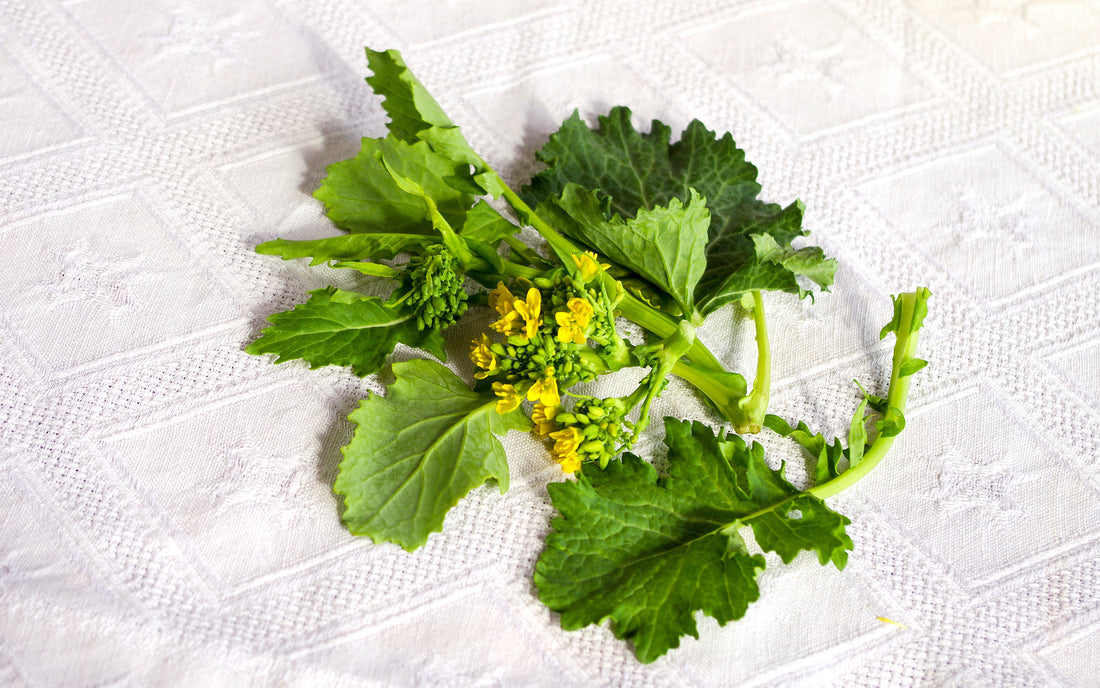Friarielli is an often overlooked ingredient that many Swedes aren't even aware of. In Naples, on the other hand, it is widely used, especially on pizza.
The green vegetable may not look super exciting, but it can give a delightful kick to pizza and other dishes if combined and cooked correctly.
After you have read this article, you'll know all you need to know about friarielli.
What is friarielli?
Friarielli - also often called wild broccoli - is an Italian vegetable that you mostly find in Naples. With roots dating back to ancient times, it has been in the game for a long time, and if you eat pizza around Naples, you'll undoubtedly encounter it.
It was originally grown in Campania, but has now spread across much of the country. Visually, friarielli has a green color on the darker side, and as a plant, it has tender stems and small flowers (although they are usually harvested before the flowers open).
Outside Naples, there are many different names for friarielli, and it's easy to get confused. Cimi di Rapa - something often said instead of friarielli - is the same plant as friarielli. The difference is that friarielli is only the upper part of the plant with the broccoli-like appearance.
Furthermore, friarielli is very healthy, as it contains a cocktail of vitamins and antioxidants.
What does friarielli taste like?
Describing taste is always tricky, but friarielli definitely reminds of broccoli. However, it's more bitter, which may not sound particularly nice, but if prepared right and combined well, the bitterness becomes a delightful complement to the dish.
There's also a small hint of almond if you really want to nerd out, but we'd say it's enough to compare it to broccoli. In other words, friarielli has no weird taste, and we think many can appreciate it. But you'll simply have to try and see for yourself!
The texture of friarielli and how you can influence it
The texture is easier to describe than the taste; we all chew almost the same way. Usually, friarielli is quite crispy, which is nice on dishes like pizza and pasta that can often lack this element.
The crispness decreases the more you cook it, but the texture usually stays good. So, you can influence the texture depending on how you prepare it. For instance, you can fry friarielli in lots of olive oil (preferably with garlic as well) before use. Then it becomes a bit less "chewy" while remaining crisp. This option is probably preferable if you're not baking it in the oven on a pizza or similar.
You can also simply boil it, leaving it quite soft. You can even just use the friarielli as is, after a rinse of course. Then it's not too crispy, but a noticeable chewy texture remains.
Friarielli on pizza
Friarielli on pizza is not a big thing in Sweden, and we think that's a shame. In Naples, friarielli paired with salsiccia is one of the most common pizzas, and there are good reasons for that.
Firstly, the vegetable looks very beautiful on the pizza and gives a great aesthetic boost - it just looks more professional! Then friarielli is nice because it increases the complexity. The bitterness increases at the same time as a subtle sweetness is introduced.
One of the most popular pizzas in and around Naples is Salsiccia e Friarielli. Here they pair the unique bitterness of friarielli with the spicy sausage, which together with a sweet tomato sauce and a mild and creamy mozzarella makes a really good pizza.
How to choose the right friarielli?
Here we have gathered some of the most common questions we get about friarielli:
Does the friarielli need to be fresh?
In Sweden, friarielli is most often found in a canned form. It's easy to think that fresh is tastier, which it can be if you eat it raw. In a cooked form on pizza, canned works excellently. The biggest difference then is in the texture, where the fresh one is crispier.
Does the season matter?
If you're buying canned friarielli, the season isn't particularly important. However, if you're buying it fresh, it tastes best during the fall and spring periods when it's moderately cool. This is only the case if you're purchasing friarielli grown outdoors around the Mediterranean, which most people don't.
Which friarielli is the best?
Of course, the friarielli needs to be good to taste good. There are lots of high-quality products, and many of them are fine choices. We offer Gustarosso's Friarielli, which is both balanced in flavor and always tastes fresh thanks to a packaging with salt and water.
Are you craving to try?
If you're curious about friarielli and want to try it yourself on pizza, pasta, or something else entirely, you're in the right place! In our webshop, you can order both Lilla Napoli's favorite friarielli and a lot of other tasty products.



